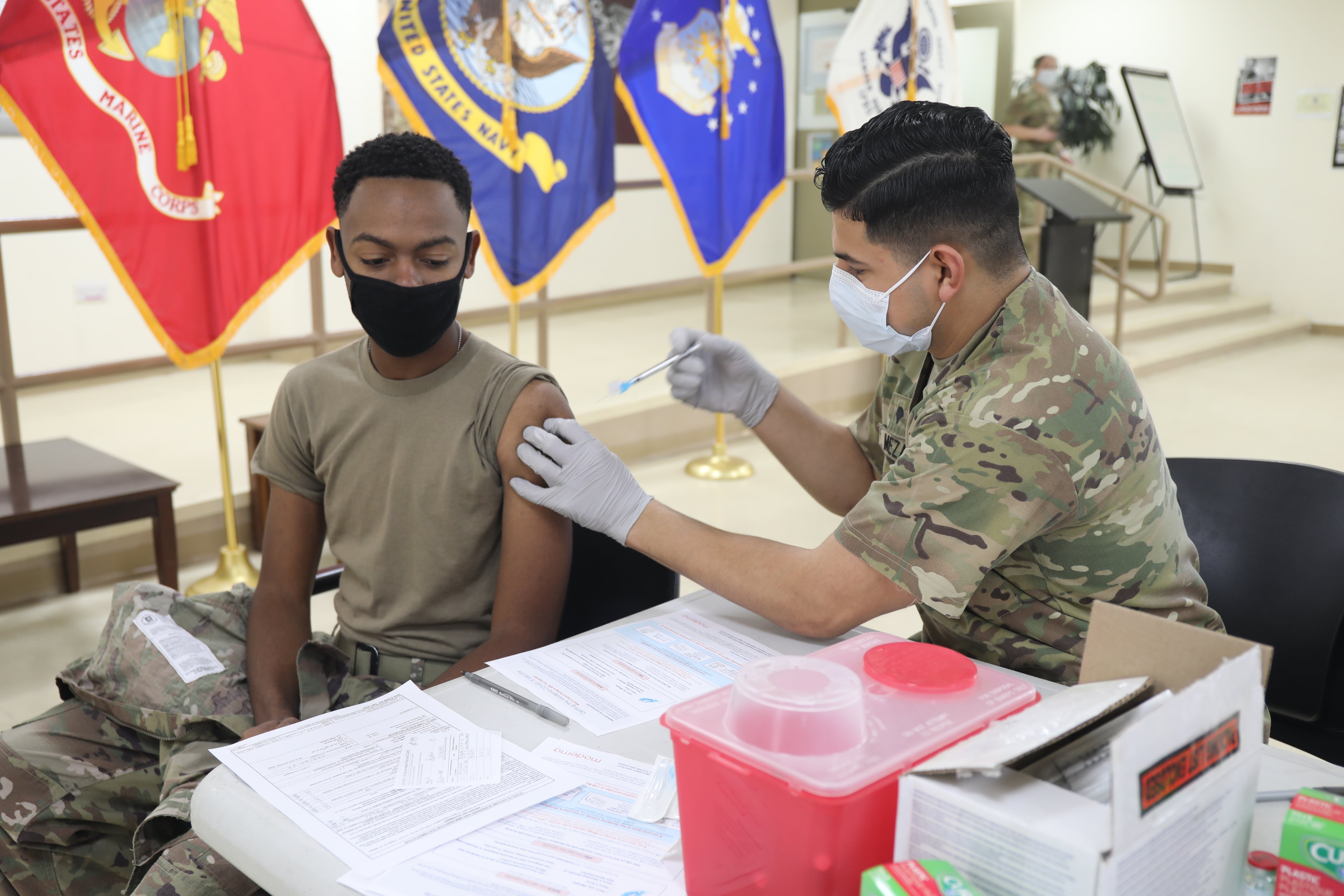Correction: A previous version of this article said more than half of all soldiers and more than three-fourths of active duty soldiers have received at least one vaccine dose, according to an Army statement. After this article was published, Army officials said the numbers they issued were wrong. This story has been updated to reflect the new numbers.
More than 1 million COVID-19 vaccine shots had been administered by Army medical treatment facilities at about 80 locations globally as of Tuesday, and roughly a third of those doses were given to soldiers.
Of the 1 million inoculations, 436,533 recipients are fully vaccinated and 577,562 have received the first dose, the Army’s Pentagon spokespeople said Wednesday.
Approximately 358,512 soldiers have received their first vaccine and 278,336 are fully vaccinated, Army officials said in a statement.
Almost half of active duty soldiers have received at least one dose and over one-third are fully vaccinated.
The rest of the vaccines administered at Army facilities are being given to families, civilians, contractors and eligible beneficiaries. Vaccination appointments are currently open to all eligible beneficiaries.
The demand for vaccines has been high, Army officials told reporters late last month.
“Everybody needs more vaccines so they can vaccinate their soldiers,” Army Medical Command boss Lt. Gen. R. Scott Dingle said April 27.
RELATED

“However, we are just getting to that point, with the increased production of the vaccine, where we’ll be able to meet that demand,” Dingle added.
Even though some in Congress have worried that the process is moving too slow and voiced support for making vaccinations mandatory for service members, they will remain optional unless the White House intervenes.
And although Army leaders have been lobbying aggressively to get troops comfortable with taking it, the service’s vaccine program leaders say they’re not concerned about refusals.
“Until the supply exceeds our demand we’re really not keeping that much track of it, because at this point the demand far outstrips supply,” Brig. Gen. Matthew D. Smith, the Army’s director of operations at the Pentagon, said April 27.
“Every time a soldier says ‘Hey, I’m not interested’ … it basically becomes a next man up drill, next woman up drill, and we just get the shot in the arm of any soldier,” Smith added. “We’re doing that to the tune of about 95 percent of the supplies issued each week.”





